20 Times Fast Food Chains Changed Their Recipes
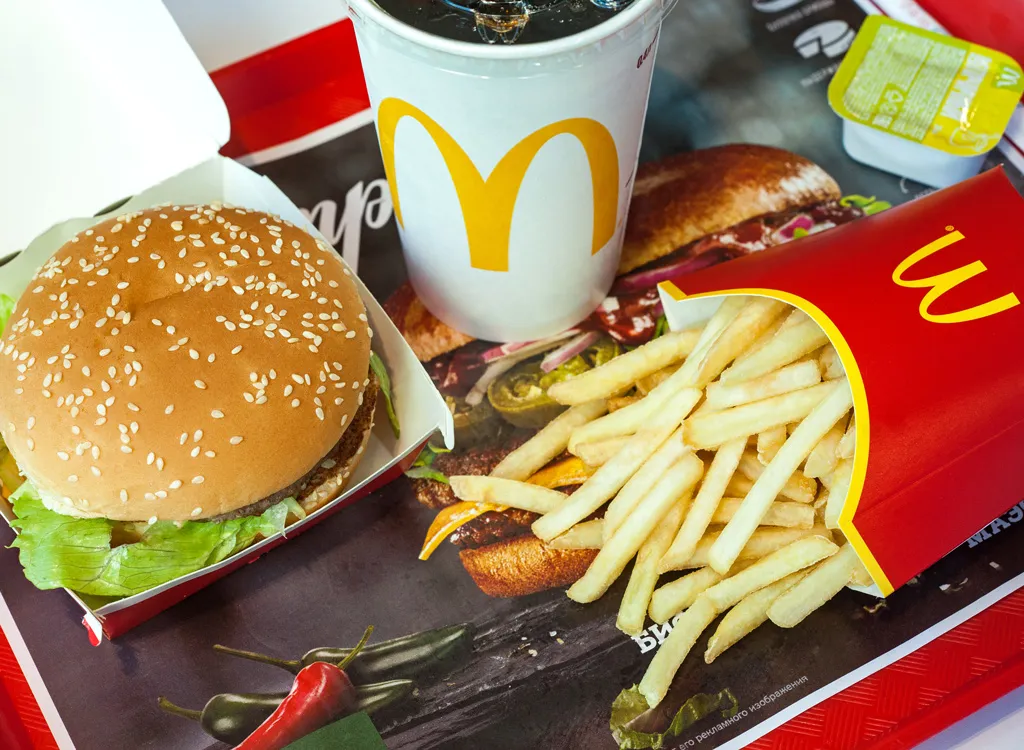
When Ray Kroc opened up the first McDonald’s restaurant in 1955, the signature beef hamburgers and golden fries were perfected based on Kroc’s core principles of quality, service, cleanliness, and value. Little did he know that decades later, diners’ ever-changing demands would cause the fast food giant to change its legacy recipes.
Whether the incentive is fewer sketchy ingredients or improved taste, the Golden Arches isn’t the only fast food joint that had to reformulate its recipes to keep up with competitors. Below, you’ll find 20 times restaurant chains tweaked their food’s formulas. And if you’re looking for more chain trivia, don’t miss these 100 Crazy Fast Food Facts You Never Knew.
Want healthy recipes, supermarket shopping guides, and essential nutrition tips at your fingertips? Subscribe to the new Eat This, Not That! magazine now! For a limited time, you can save 50 percent off the cover price—click here!
Burger King Tries Low-Fat Fries
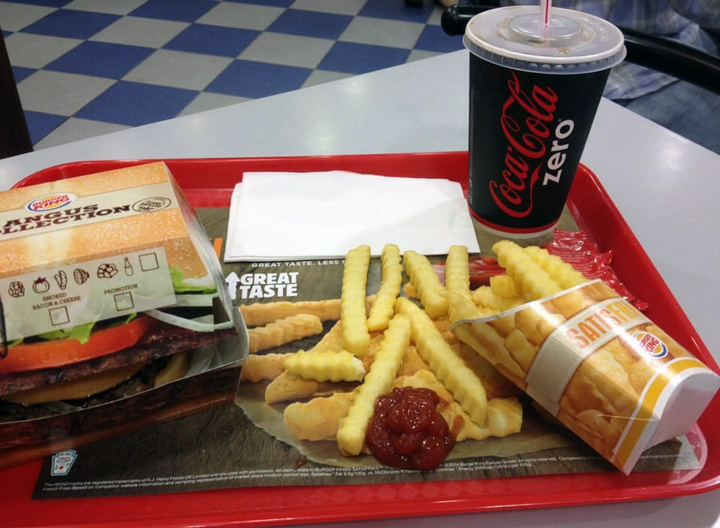
Fall 2013 marked the season when Burger King swapped its French fries with the aptly named Satisfries—a salty side that boasted 40 percent less fat and 30 percent fewer calories than the original fries. The secret? While BK’s newer spuds were fried with the same kind of oil, Satisfries used a proprietary oil repellent that helped the potatoes absorb way less fat.
To meet consumer demand for healthier fast food items without compromising taste, the home of the Whopper debuted “a great tasting French fry with all the French fry attributes that people expect—crispy on the outside and fluffy on the inside,” Burger King’s North American CMO Eric Hirschhorn told Time. Unfortunately, Satisfries were sliced off most national BK menus the following summer due to declining sales.
McDonald’s Switches to Vegetable Oil
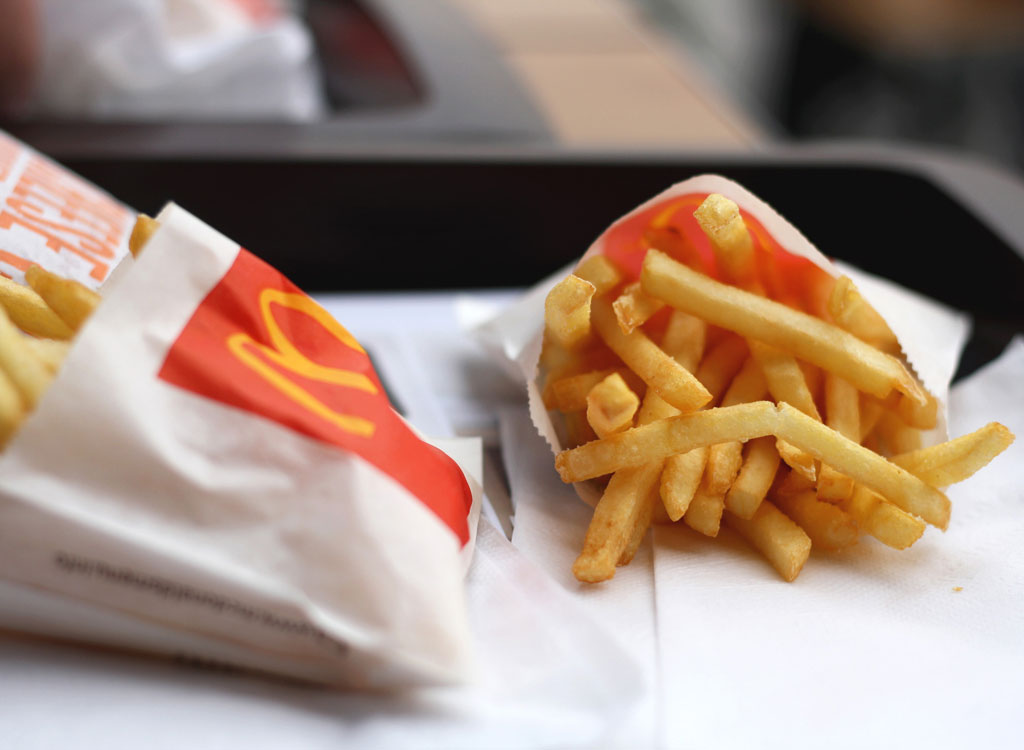
In the 90s, Ronald McDonald heeded consumer demand for less saturated fat and switched from frying its foods in beef tallow to vegetable oil. While vegetable oil sounds more health-conscious, their current oil blend includes canola oil, corn oil, soybean oil, hydrogenated soybean oil, and natural beef flavor. And although the last ingredient was likely added to retain the original oil’s umami flavor, “natural beef flavor” is vague and gives us zero intel on what’s actually in the additive. What’s more, hydrogenated oils often contain traces of saturated fat, so Mickey D’s didn’t completely remove the oft-avoided oil after all.
Noodles & Company Goes Natural
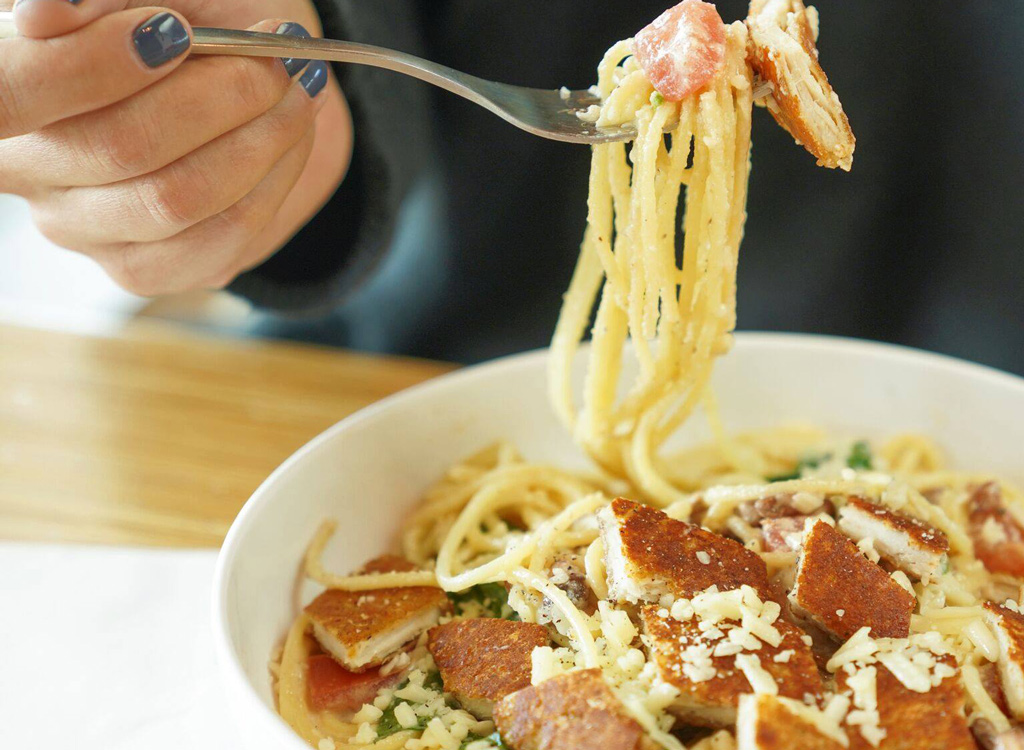
Another major restaurant chain, Noodles & Co., hopped on the additive-free bandwagon in 2015 when it announced plans to remove artificial colors, flavors, preservatives, and sweeteners from its core offerings including noodles, breads, sauces, soups, condiments, and dressings. “Ironically enough, artificial sweeteners are worse than real sugar, as overconsumption can lead to metabolic diseases and desensitization to sweetness in the long run. That means there’s a risk you’ll end up craving even more sugary treats!” says Jeff Csatari, author of the tried-and-true 14-Day No Sugar Diet.
Kentucky Fried Chicken Swaps Its Original Cooking Oil
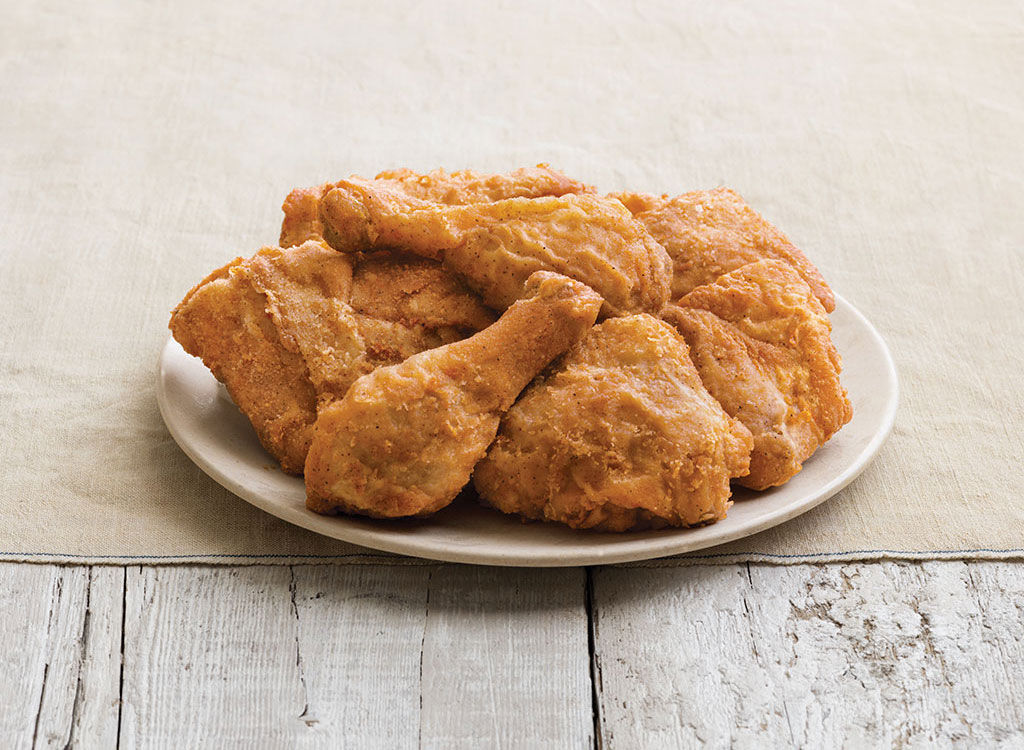
While the secret 11 herbs and spices are still under locks, the colonel revealed that he swapped KFC’s cooking oil back in 2007, replacing undisclosed trans fats with soybean oil and frying its popular poultry in a blend of canola and soybean oils, or just soybean.
McDonald’s Egg McMuffin Ditches Margarine
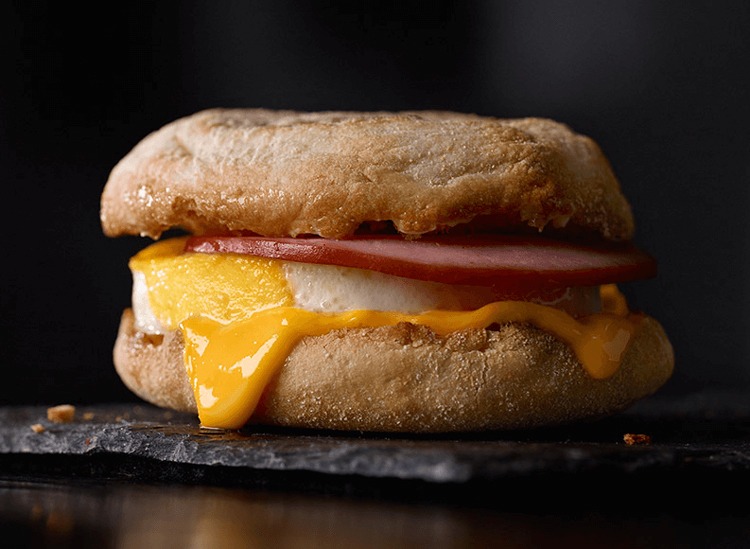
Before permanently rolling out its all-day breakfast menu, McDonald’s made the switch from liquid margarine to real butter in September 2015. While margarine is mistakenly known as the healthier version of butter, it actually contains heart-taxing trans fats. Butter, on the other hand, uses one simple ingredient (cream) and sometimes a sprinkle of salt, and contains the added benefit of CLA—a naturally-occurring trans fat that actually helps you torch your midsection. So if you’re going for the once-in-a-blue Hotcakes or an Eat This-approved Egg McMuffin, rest assured that Mickey D’s smears your b’fast with real butter.
McDonald’s Switches to Natural Ingredients
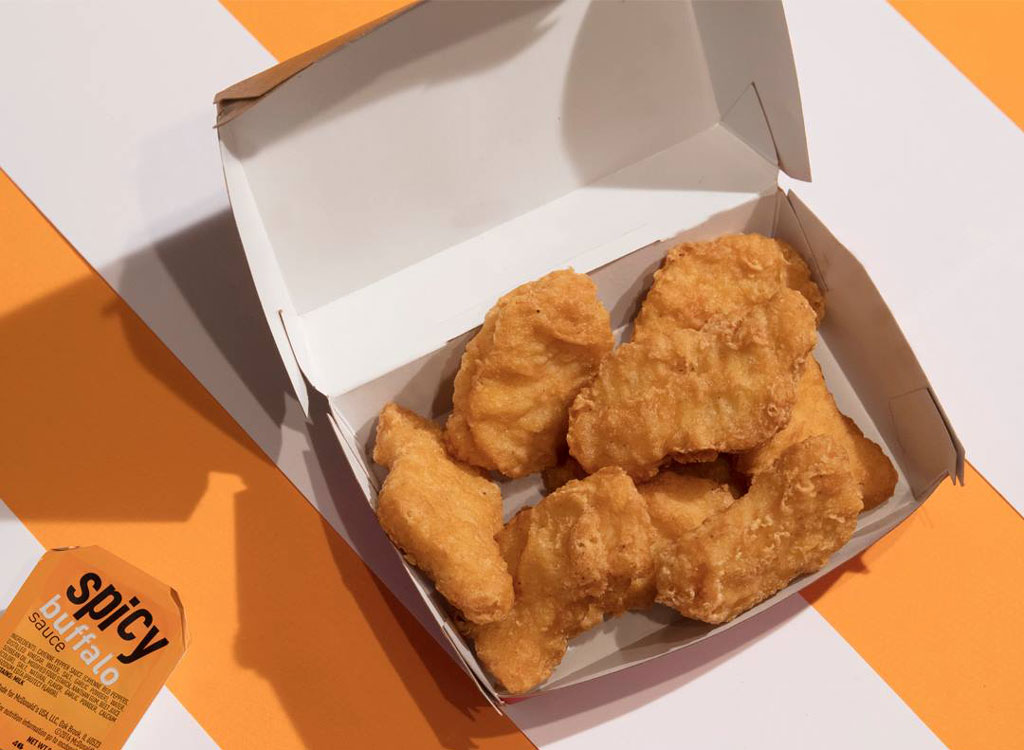
After announcing the change in August 2016, McDonald’s spent a year working on a Chicken McNugget recipe that didn’t call for artificial preservatives. “In the early days, we didn’t have as many distributors so we wanted a long shelf life so [food] could go across the country,” McDonald’s U.S. chief supply chain officer Marion Gross tells Fortune. “Times and infrastructure have changed.” Moreover, McDonald’s wiped antibiotics out of its chicken and replaced the chicken skin, safflower oil, and citric acid with pea starch, rice starch and powdered lemon juice in the McNuggets.
Starbucks Shuns Trans Fat

Starbucks made some serious and commendable changes to its food and beverage repertoire as early as 2007. In May ’07, the joint announced that it will remove artificial trans fat—in the form of partially hydrogenated oils—from both foods and drinks by the end of the year in U.S. (including Alaska) and Canada locations. “This is a great idea because the scientific evidence indicates that industrial trans fats are more harmful than any other type of fat and can be removed from foods. It’s a win-win situation,” Dr. Dariush Mozaffarian, MD, DrPH, Assistant Professor of Medicine and Epidemiology at Harvard Medical School and Harvard School of Public Health, said in a press release.
Taco Bell Finds a New Dye For Nacho Cheese
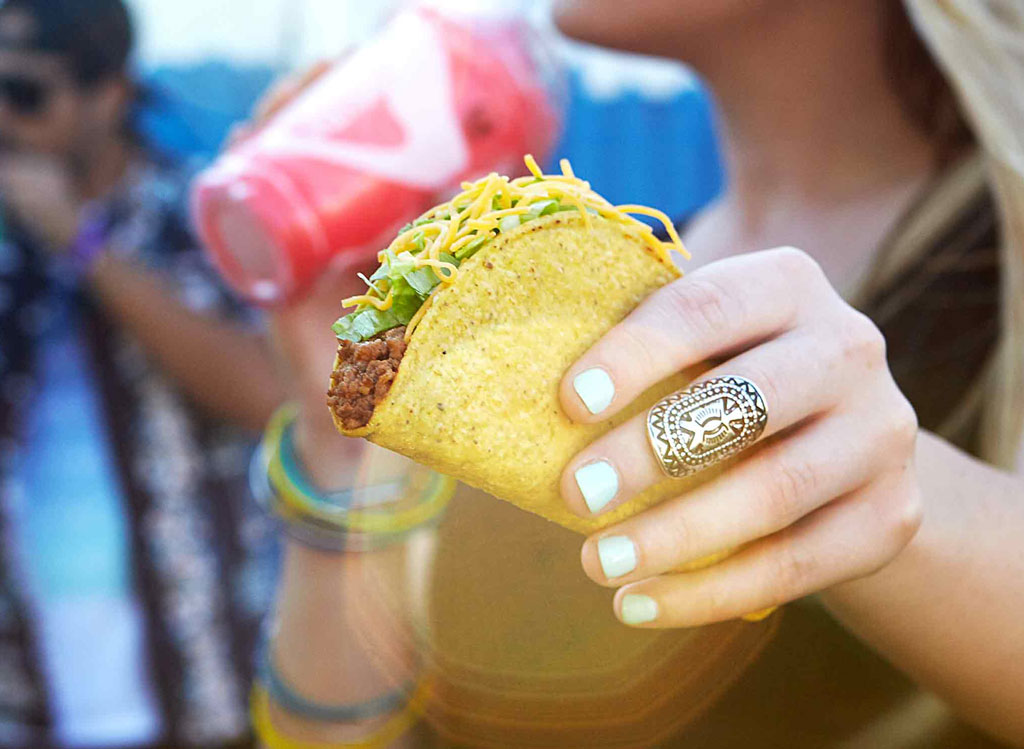
Taco Bell respectably removed artificial flavors and colors, added trans fat, high fructose corn syrup, and unsustainable palm oil from its core menu items in 2016 and tidied up the rest of its menu of preservatives and additives by the end of 2017. While we’re applauding that the nacho cheese is no longer dyed with yellow No. 6, we’d personally love to see the Bell remove the kidney-harming phosphates from its seasoned ground beef, too.
Wendy’s Shrinks Its Chickens
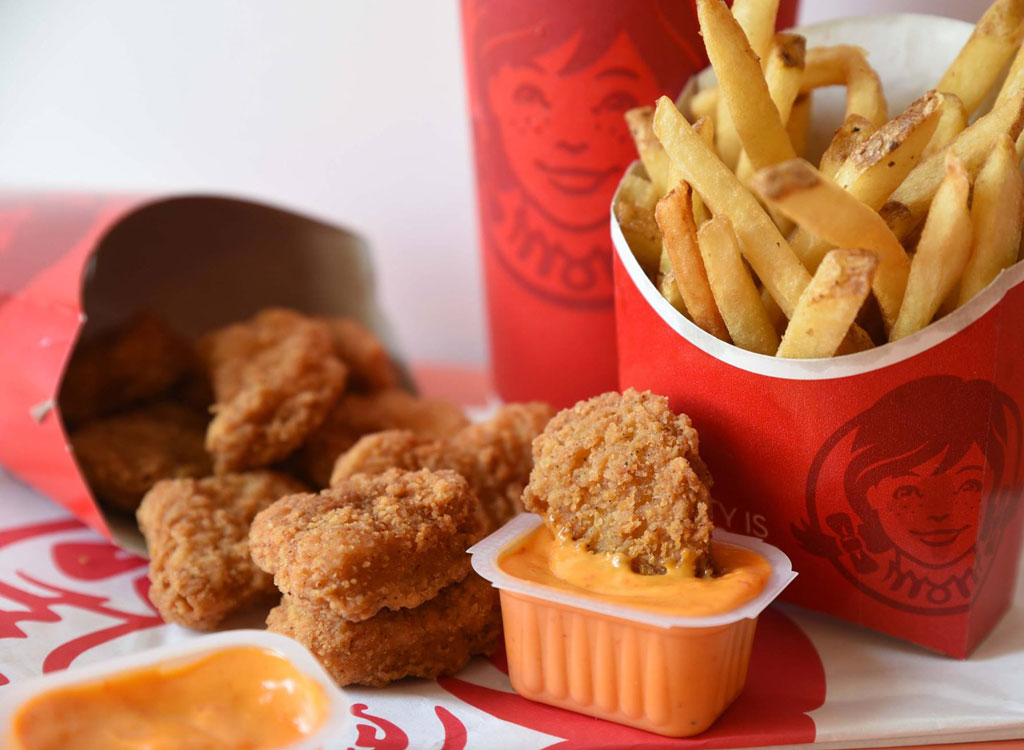
After receiving complaints about the rubbery texture of Wendy’s chicken, the fast food giant spent a whopping $30 million on a solution that was guaranteed to appease displeased diners. Because smaller chickens produce juicier meat, the company worked with suppliers to shrink the average size of its chickens by up to 20 percent. While the solution required Wendy’s to harvest chickens sooner than they previously did, the move didn’t affect the size of the protein-packed fillets in sandwiches and salads—but it certainly improved its taste and texture.
Panera Bread Debuts a ‘No-No List’
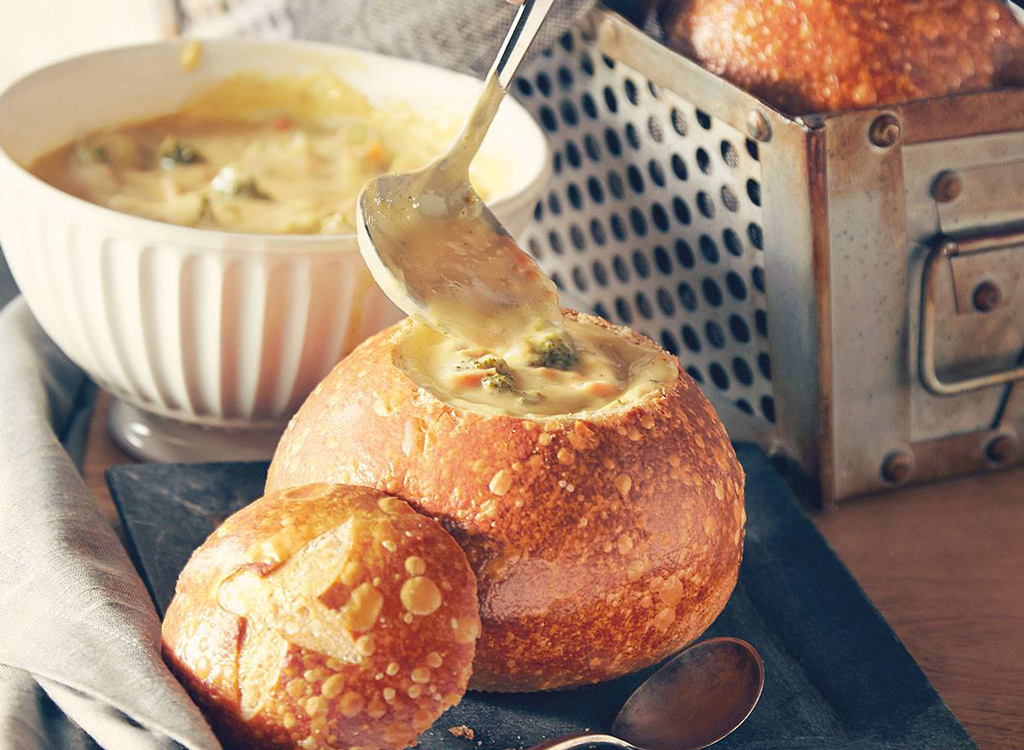
At the close of 2016, Panera delivered on its vow to remove all artificial additives in their No No List from its entire menu. That means you’ll find no trace of kidney-harming sodium phosphate in the deli turkey, no appetite-spiking MSG in the sandwiches, and zero potentially trans-fatty modified food starch in the soups.
Speaking of soups, it took Panera a whopping 60 tries to reformulate its all-star, the Broccoli Cheddar soup. “The hardest part was keeping the smooth, velvety texture that keeps you coming back for more. The cheese we used before contained sodium phosphate, an additive that helps cheese melt consistently and stay creamy. But that additive is on our No No List, so we worked with a cheese maker to create a new cheese without it,” Panera says, adding that they swapped out their outsourced Dijon mustard for a homemade one. The chain enjoyed the fruits of its labor when taste testers couldn’t tell the difference between the OG Broccoli Cheddar and the clean version.
Starbucks Pours 2% Milk Instead of Whole
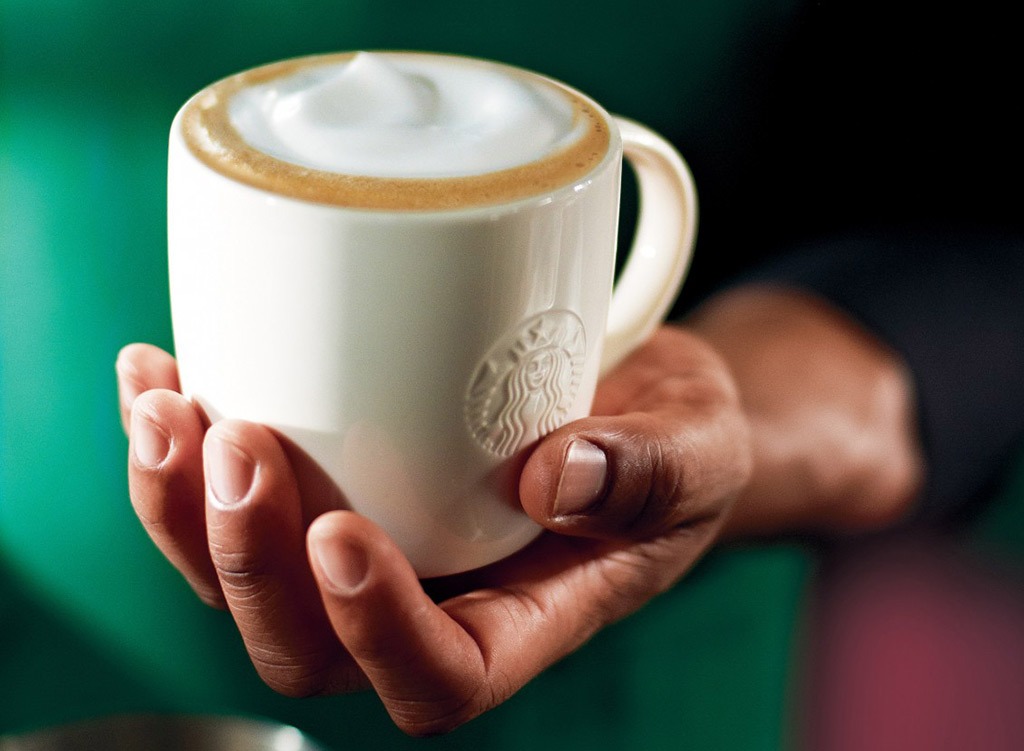
By the end of 2017, Starbucks also pledged to change its default milk used in beverages from whole milk to 2 percent in order to keep “all the nutritional goodness of milk while taking out some of what does not add nutritional value,” Janet King, professor of nutrition at both the University of California at Berkeley and the University of California at Davis, said in a press release. While customer requests triggered the bold move to switch to low-fat milk, the Bux prides itself in offering multiple milk options such as soy, almond, and coconut.
Pizza Hut Nixes Artificial Colors & Flavors
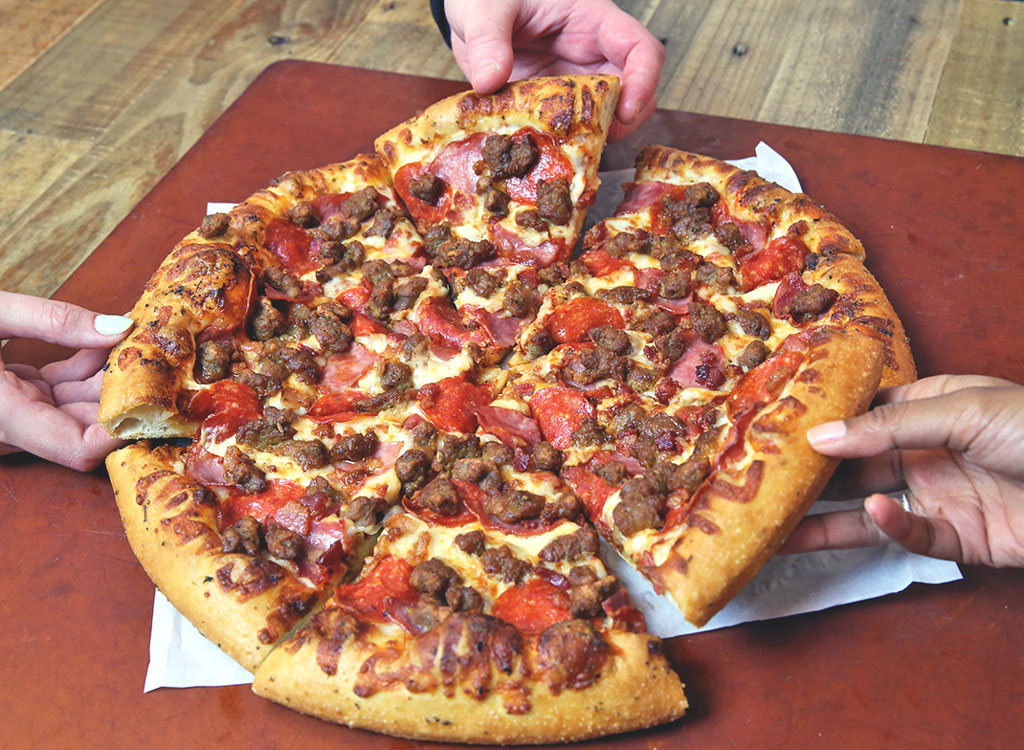
Pizza Hut is aware that ingredient transparency is key to pleasing the growing pool of health-conscious diners, and so the joint phased out artificial coloring and flavors from almost all of the pizzas in 2015.
Subway Axes Additives
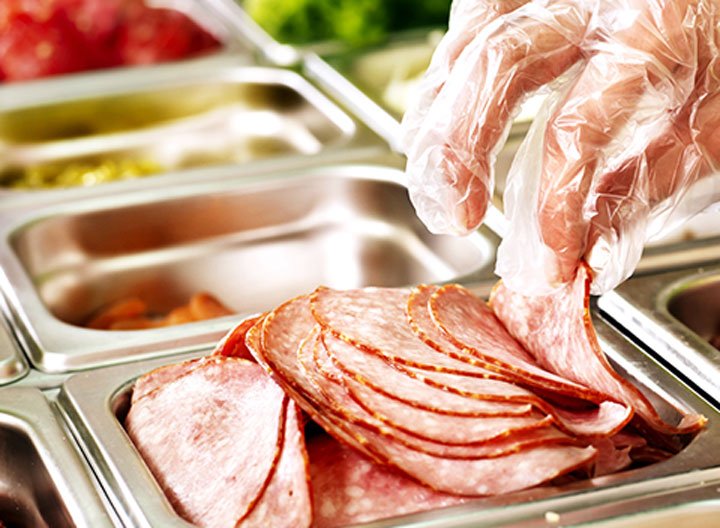
In 2017, Subway said sayonara to banana peppers colored with Yellow No. 5 and turkey meat preserved with propionic acid, and replaced the sketchy additives with turmeric and vinegar, respectively. That means zero subs and salads crafted with artificial flavors, colors, and preservatives.
Starbucks Shuns HFCS
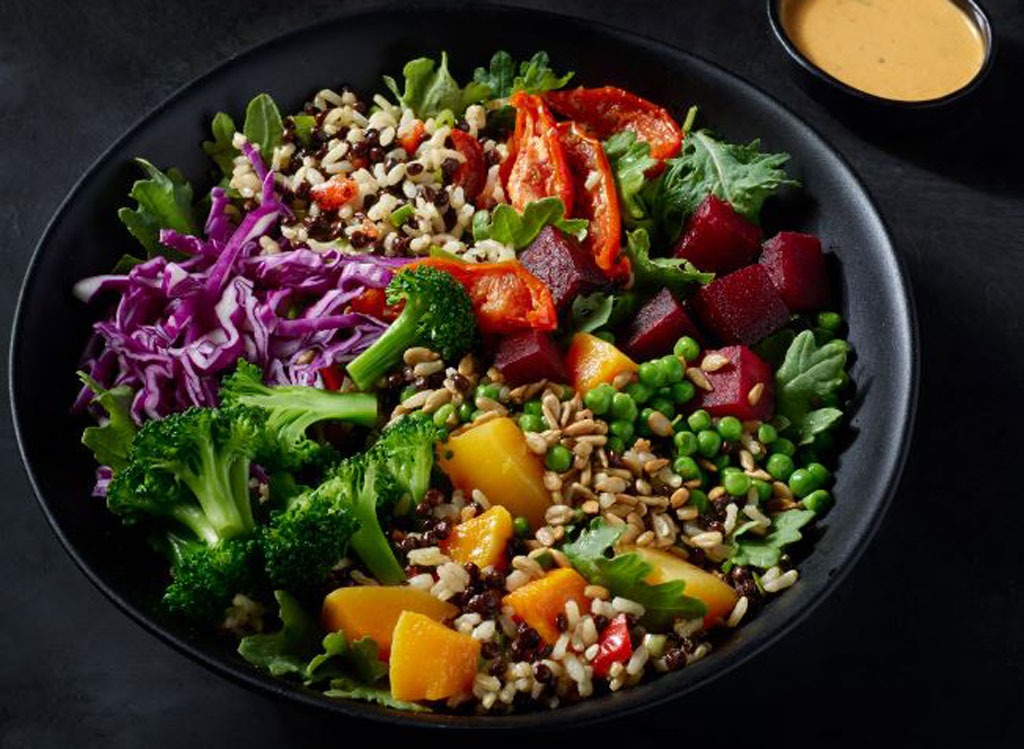
In June 2009, Starbucks’ baked goods broke up with high fructose corn syrup in addition to artificial flavors and dyes. Following that summer, the java giant introduced healthy new items such as salads and egg-white breakfast sandwiches to its menu.
McDonald’s Goes Fresh
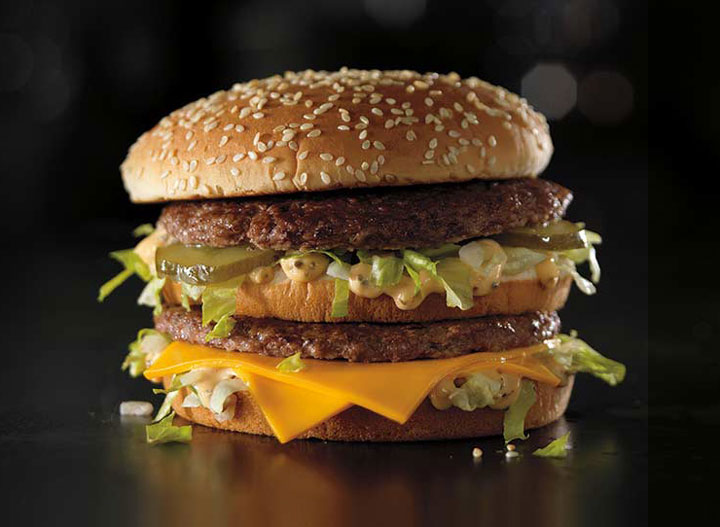
In May 2018, Mickey D’s swapped its frozen beef patties to fresh in order to stay afloat amidst competitors like Wendy’s “fresh, never frozen” beef campaigns and Shake Shack’s commitment to natural ingredients. While fresh beef cooks faster than frozen, it does eliminate McDonald’s ability to batch-cook burgers in advance, which may pose a threat to its output speed. “If it slows down the drive-through, that’s the critical part of our business. And so we just had to spend a lot of time really making sure that as we were cooking only when someone ordered, we’d figured out a way to do it that wasn’t going to slow down service time,” McDonald’s U.S. president Chris Kempczinski told BBC.
Taco Bell Opts For Cage-Free
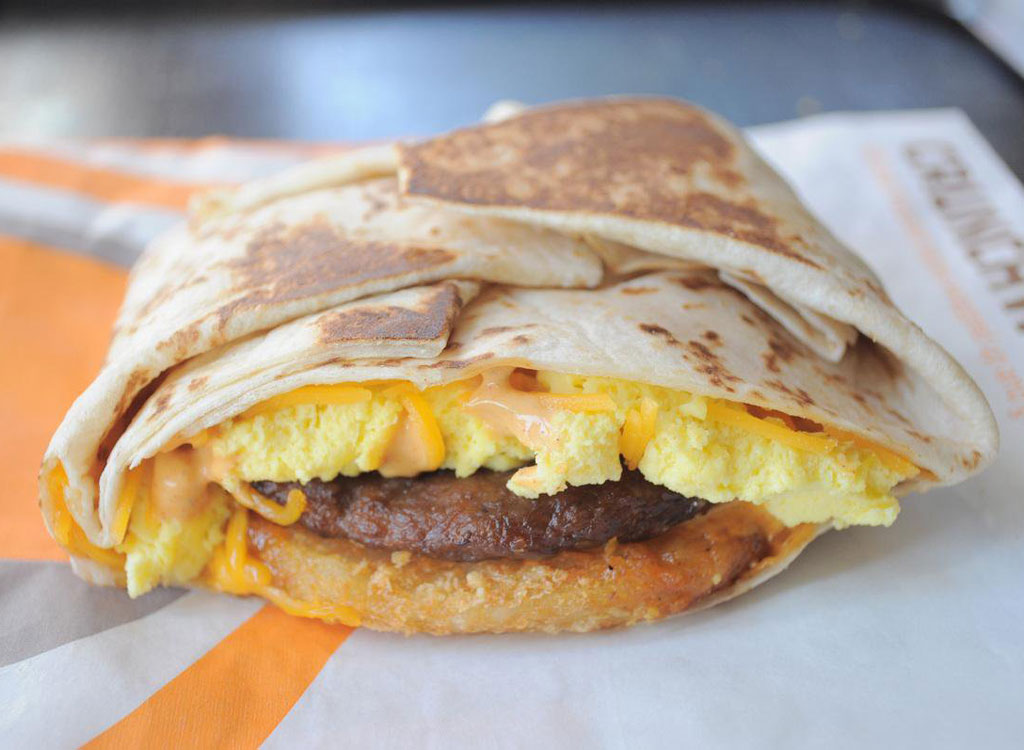
By the end of 2016, Taco Bell replaced its entire egg supply with American Humane Certified cage-free eggs in all of its over 6,000 U.S. locations. The taco joint was the first national quick-service restaurant to completely implement the change, benefitting about 500,000 hens, according to a press release.
“Delivering a sustainable and safe egg supply to Taco Bell restaurants nationwide in one year is possible due to the brand’s large yet flexible infrastructure, and years of close collaboration with our partners,” said Liz Matthews, Taco Bell’s chief food innovation officer.
Chipotle Breaks Up With GMOs
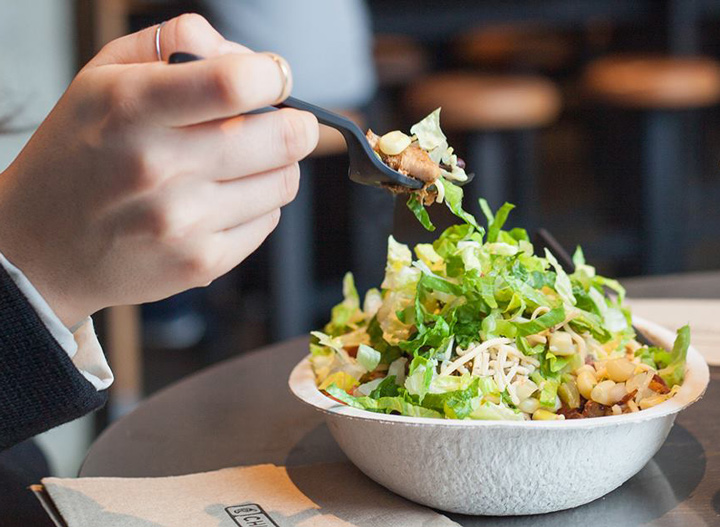
Just three years ago, Chipotle became the first major restaurant chain in the nation to use only non-GMO ingredients in its entire line of Mexican fare. “This is another step toward the visions we have of changing the way people think about and eat fast food,”Chipotle founder Steve Ells told The New York Times. “Just because food is served fast, doesn’t mean it has to be made with cheap raw ingredients, highly processed with preservatives, fillers, stabilizers, and artificial colors and flavors.” And just two years prior to this reputably audacious move, Chipotle was the first chain to label its food items that were genetically modified.
Papa John’s Actually Makes ‘Better Pizza’ With ‘Better Ingredients’
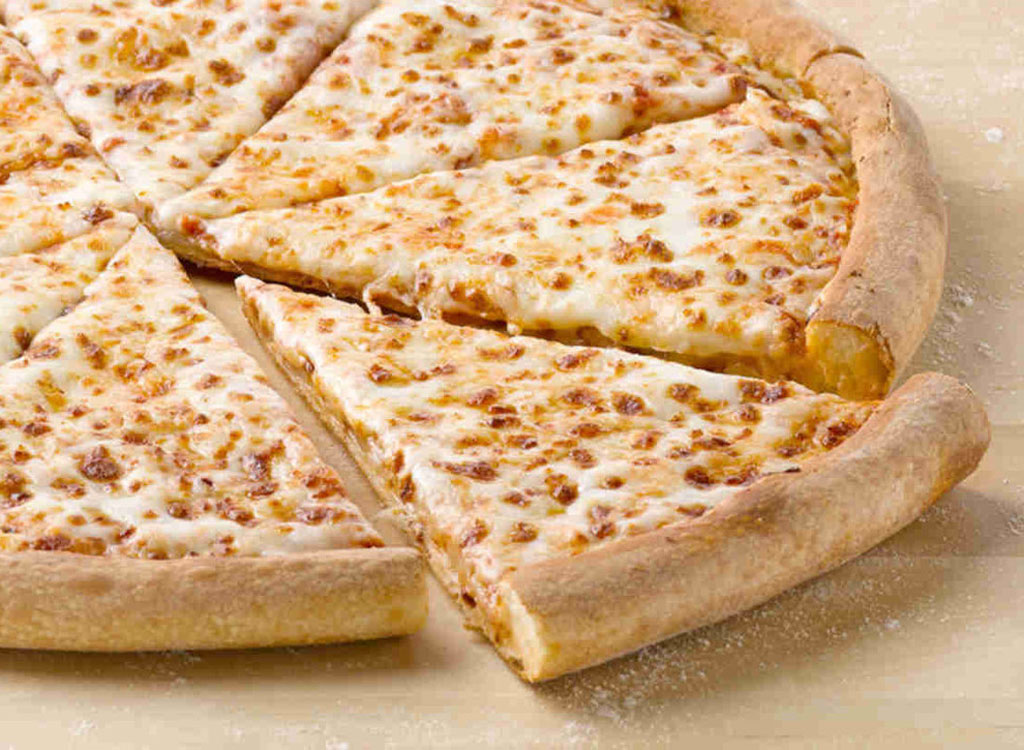
In October 2016, Papa John’s actually delivered on its slogan, “Better ingredients. Better pizza,” when it shelled out $100 million a year to eliminate 14 additives such as artificial ingredients from its pizzas. That means no flavor enhancers such as MSG in pepperoni and bacon, no high fructose corn syrup in the BBQ dipping sauce, and zero maltodextrin in the pizza dough.
Noodles & Company Sharpens Its Cheddar
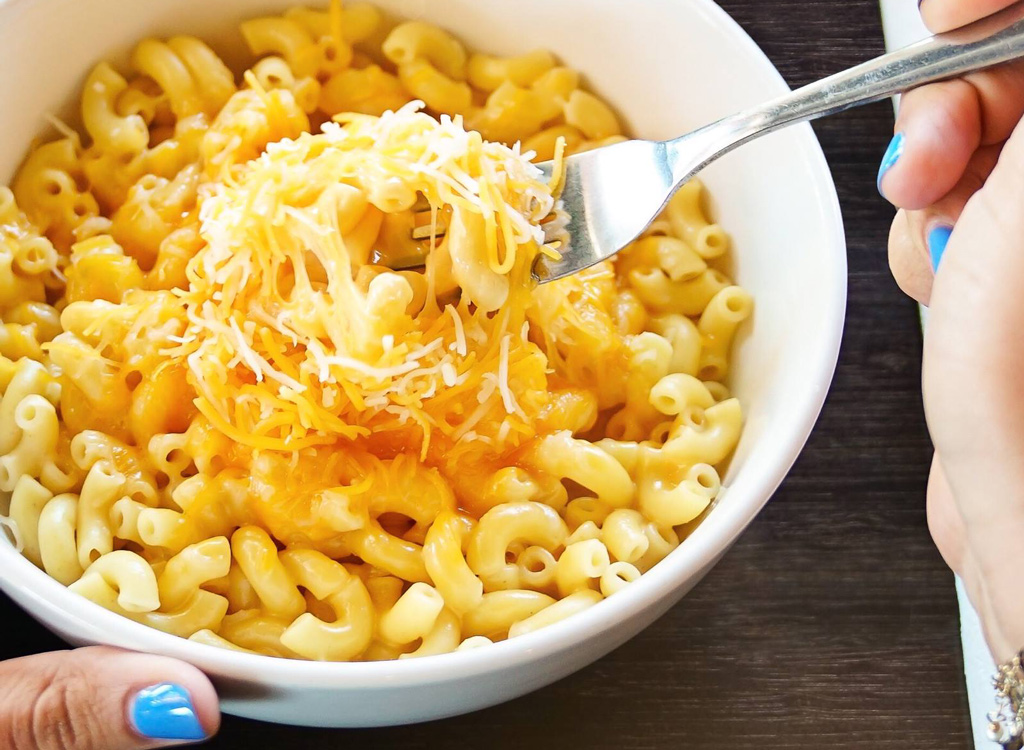
Since launching an increasingly profitable mac and cheese line in October 2017, the noodle shop has been looking for ways to improve its lucrative comfort food following its debut. In fact, the joint spent nearly a year working on increasing their cheddar’s sharpness by testing a revised recipe with a higher quality white cheddar until they finally hit the sweet (or rather, salty) spot, Noodles & Company CEO Dave Boennighausen told QSR Magazine.
McDonald’s Switches Sandwich Buns
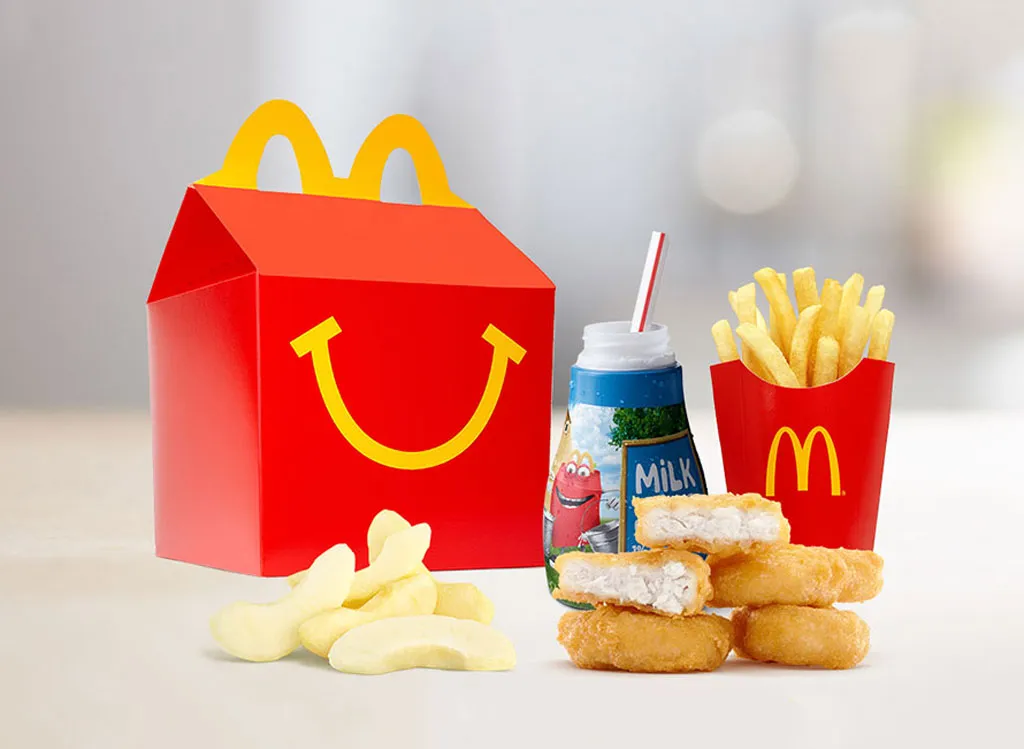
The same summer McDonald’s decided to ax artificial preservatives and antibiotics from its poultry, the Golden Arches went a step further and upgraded its sandwich buns. In efforts to simplify ingredients and appeal to more customers, McDonald’s replaced the high-fructose corn syrup for regular ol’ sugar in its carby mainstay.
Although Mickey D’s still kept belly-plumping sugar in its recipe, replacing HFCS was a smart move. A Princeton University study found that rats who consumed other forms of sugar gained less weight than those who were fed HFCS—even when the two groups’ overall caloric intake was the same! However, burger buns aren’t nearly the worst thing on the menu; find out what is in our exclusive report, Every Menu Item at McDonald’s—Ranked.








